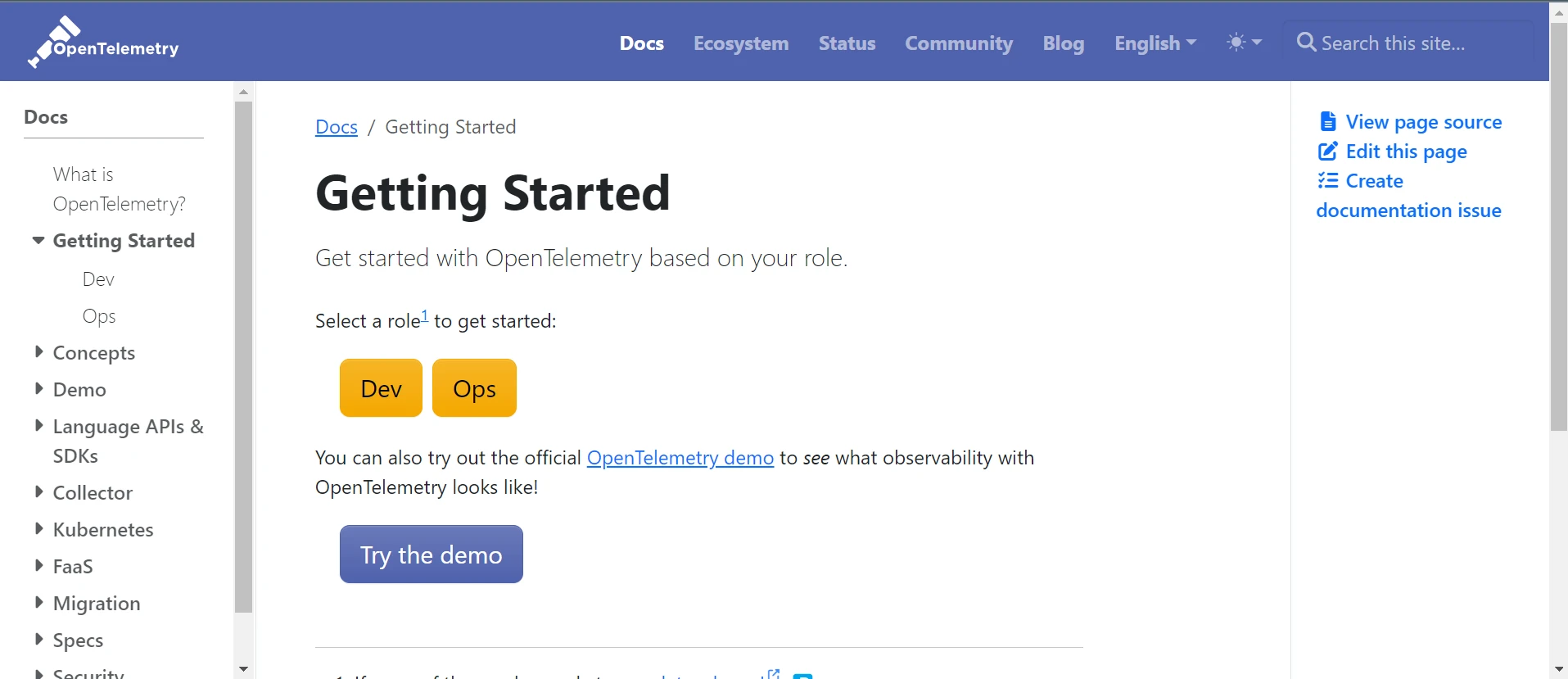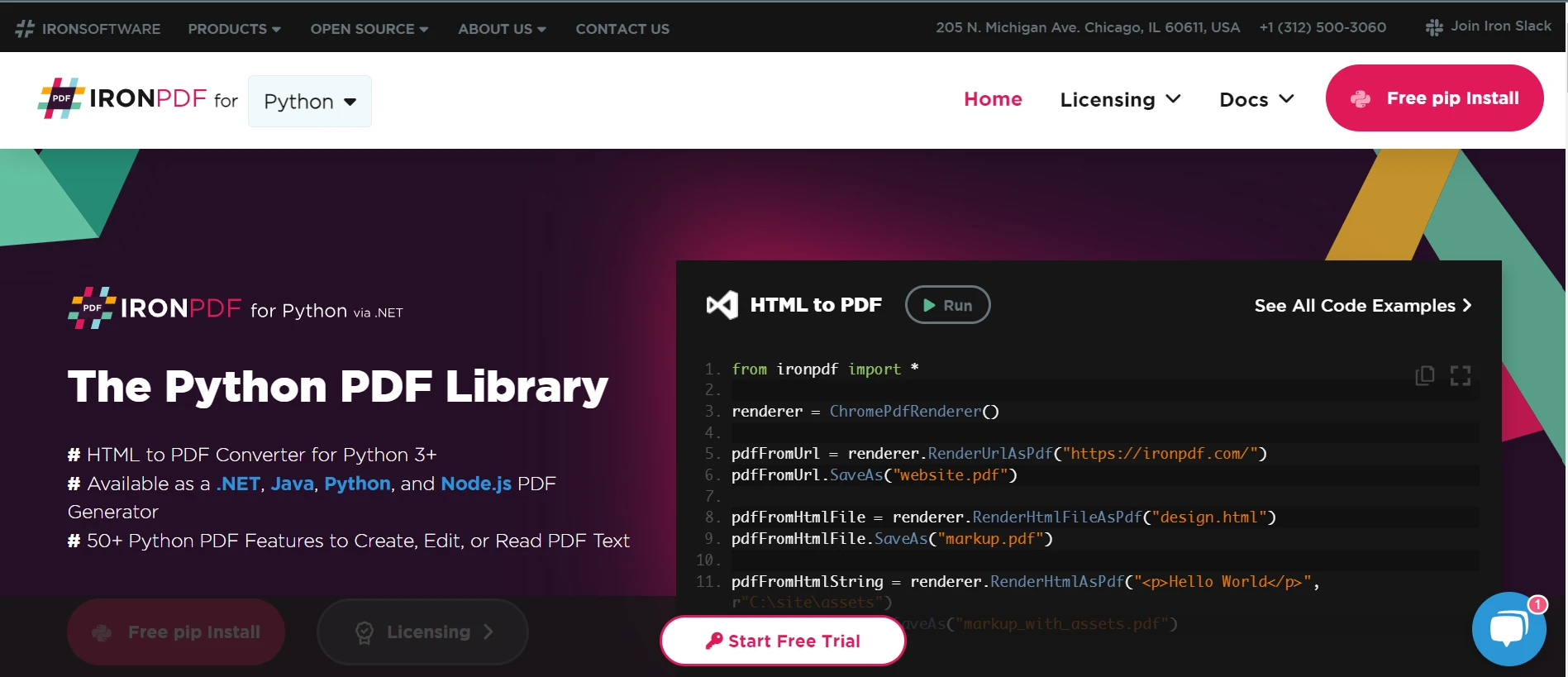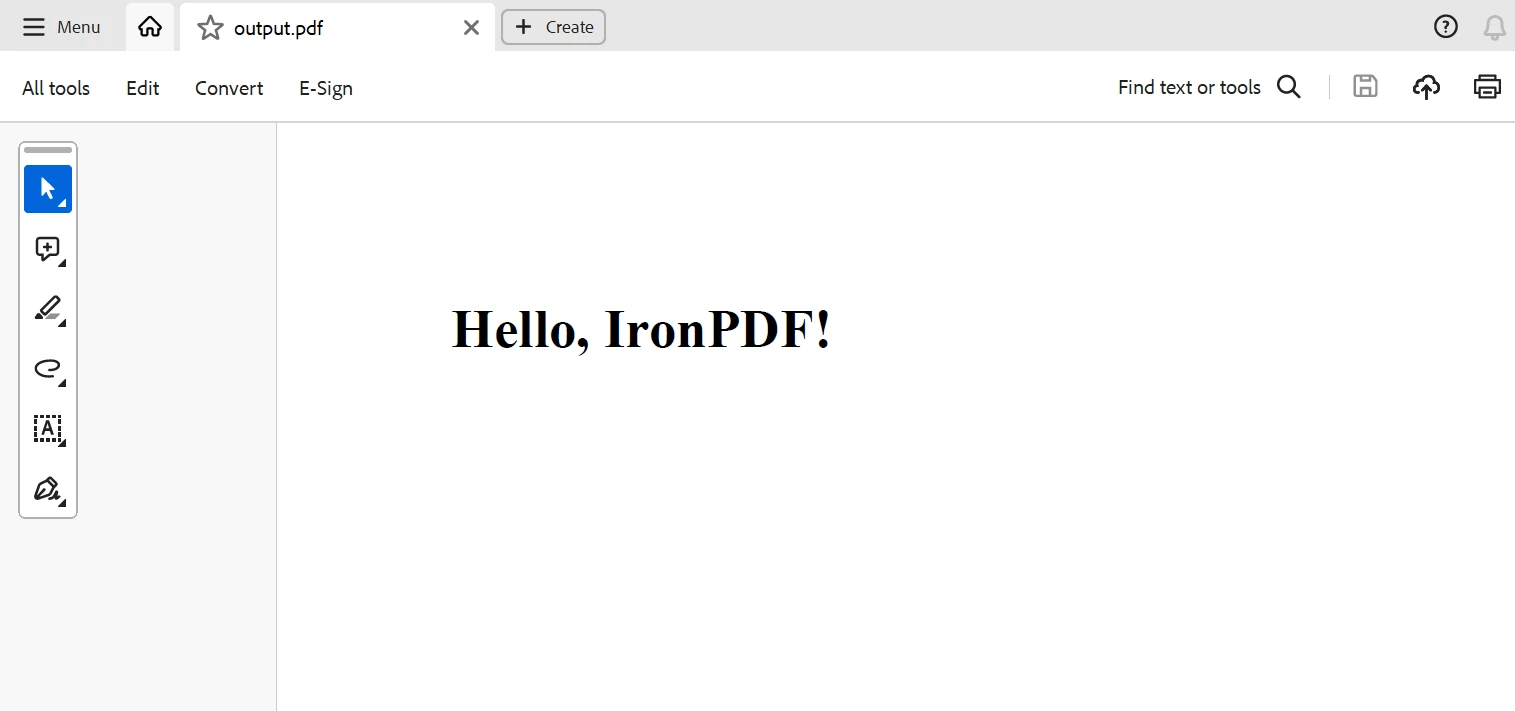Test in production without watermarks.
Works wherever you need it to.
Get 30 days of fully functional product.
Have it up and running in minutes.
Full access to our support engineering team during your product trial
Effective document generation and observability are essential foundations for developing scalable and resilient systems in contemporary software development. Developers can instrument, gather, and analyze observable data from distributed systems using OpenTelemetry, an open-source observability platform.
Developers can easily create, modify, and output PDF documents with IronPDF, a robust .NET framework. This article will discuss the integration of OpenTelemetry Python with IronPDF, demonstrating how these two technologies work together to improve observability and document generation potential.
Developers can access an extensive feature set for instrumenting, gathering, and exporting open telemetry and data from distributed systems with the OpenTelemetry API and SDK packages, an OpenTelemetry project implementation in Python.

Let's examine OpenTelemetry instrumentation for Python's salient features:
MeterProvider, which gathers numerical data regarding the behavior and performance of the system.To set up OpenTelemetry for your project, you can start by installing the necessary packages using pip install opentelemetry-exporter-jaeger.
pip install opentelemetry-exporter-jaegerAfterward, install the OpenTelemetry Python SDK using the following command pip install opentelemetry-sdk.
pip install opentelemetry-sdkThe opentelemetry-api pip package provides a comprehensive API for instrumentation, and it also offers automatic instrumentation making it easier to instrument your applications. An alternative way of doing it could be using the export-import BatchSpanProcessor method to ensure efficient telemetry data exporting.
To define OpenTelemetry SDK parameters, create a configuration file. The configuration file otel_config.py serves as an example. Ensure all your imports such as resources import Resource and trace import TracerProvider are present to set up the code example without any errors.
from opentelemetry import trace
from opentelemetry.sdk.resources import Resource
from opentelemetry.sdk.trace import TracerProvider
from opentelemetry.sdk.trace.export import BatchSpanProcessor
from opentelemetry.exporter.jaeger.thrift import JaegerExporter
# Configure Jaeger exporter
jaeger_exporter = JaegerExporter(
agent_host_name="localhost",
agent_port=6831,
)
# Create a TracerProvider with Jaeger exporter
tracer_provider = TracerProvider(resource=Resource.create({'service.name': 'my-python-service'}))
tracer_provider.add_span_processor(BatchSpanProcessor(jaeger_exporter))
trace.set_tracer_provider(tracer_provider)
Within this configuration file:
TracerProvider and configure it to be the global tracer provider.Import the otel_config module into your Python program, then initialize OpenTelemetry at the outset with the following example Python code:
from opentelemetry import trace
from otel_config import tracer_provider
# Initialize OpenTelemetry
trace.get_tracer(__name__)By doing this, the configuration found in otel_config.py is initialized for OpenTelemetry instrumentation.
Use OpenTelemetry to instrument your Python program so that it can record traces. You have two options for instrumenting your code: manually or via the built-in libraries. This is an illustration of a few manual instrumentation calls:
from opentelemetry import trace
# Start a span
with trace.get_tracer(__name__).start_as_current_span("example_span"):
# Your code here
passTo see and examine the recorded traces, go to the Jaeger user interface. To view the traces that the OpenTelemetry collector records, open the Jaeger UI in your web browser (usually at http://localhost:16686) and choose your service name.
You have successfully established and configured OpenTelemetry Python in your application by following these instructions. Now, you can see how your Python program behaves and performs by using OpenTelemetry to record traces and export them to the Jaeger backend.
With the powerful .NET library IronPDF from Iron Software, developers can create, edit, and present PDF documents within .NET applications. Developers can use IronPDF to programmatically create PDF documents from a range of sources, such as pre-existing PDF files, HTML text, URLs, and images. Let's take a closer look at IronPDF's features:

Developers may easily convert HTML content into PDF files with IronPDF. By using HTML text as input, developers can produce visually rich PDF documents with formatting, images, and styles.
Developers can generate PDF documents directly from URLs by using IronPDF. One excellent application for this functionality is capturing content from web pages or dynamically created content from web apps.
With IronPDF, images in PNG, JPEG, and BMP formats can be converted to PDF documents. This feature lets app developers create PDF documents from photos, which is helpful for apps for things like making picture albums or incorporating photos into PDF files.
After making sure Python is installed on your computer, use pip to install IronPDF.
pip install ironpdfAdd the following code below OpenTelemetry's initialization to use IronPDF to create a PDF document:
from ironpdf import ChromePdfRenderer
from opentelemetry import trace
# Generate PDF document with IronPDF
with trace.get_tracer(__name__).start_as_current_span("pdf_generation"):
iron_pdf = ChromePdfRenderer()
html_content = "<html><body><h1>Hello, IronPDF!</h1></body></html>"
pdf_content = iron_pdf.render_html_as_pdf(html_content)
# Save or send the PDF content as needed
with open("output.pdf", "wb") as file:
file.write(pdf_content)In this passage of code:
pdf_generation.output.pdf contains the generated PDF material.
Finally, the combination of observability and document-generating capabilities in Python applications is provided by the OpenTelemetry Python and IronPDF connection. Developers can easily create professional-looking documents on the fly while gaining better insights into system performance by integrating distributed tracing and metrics collecting with dynamic PDF generation.
The collaboration between OpenTelemetry Python and IronPDF emerges as a potent enabler, enabling developers to create reliable, scalable, and performant applications, as enterprises strive for efficiency and excellence in their software solutions.
A lifetime license is included with IronPDF, which is fairly priced when purchased in a bundle. The bundle is a great deal at just $749, and it only needs to be bought once for several systems. Online engineering help is available to license holders 24/7. Please visit the website to learn more about the charge. Visit this page to learn more about the products sold by Iron Software.